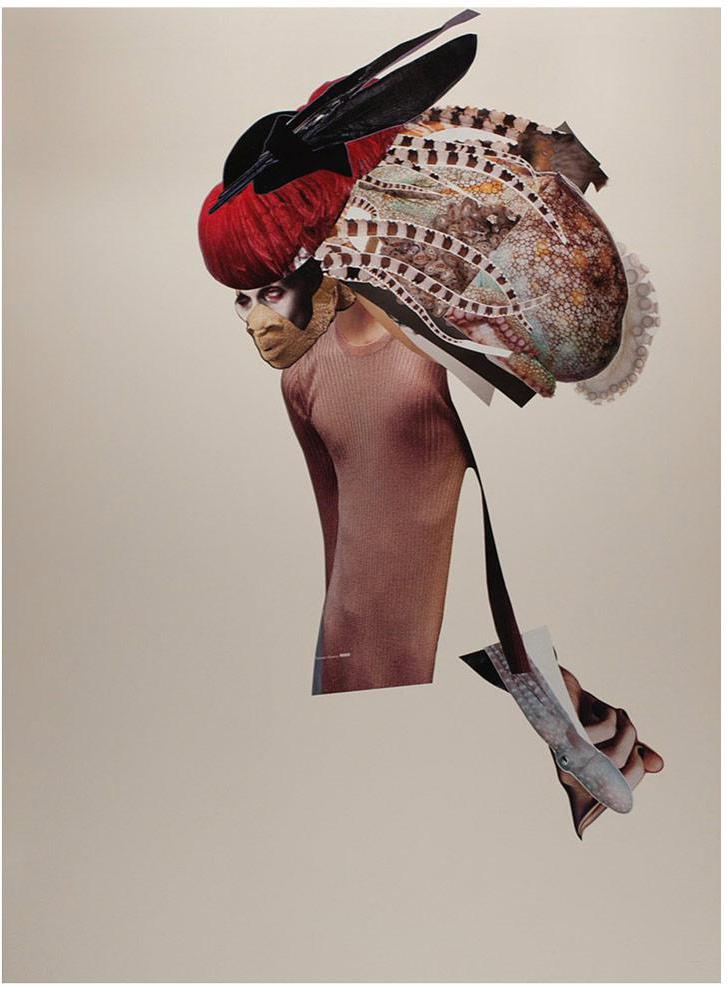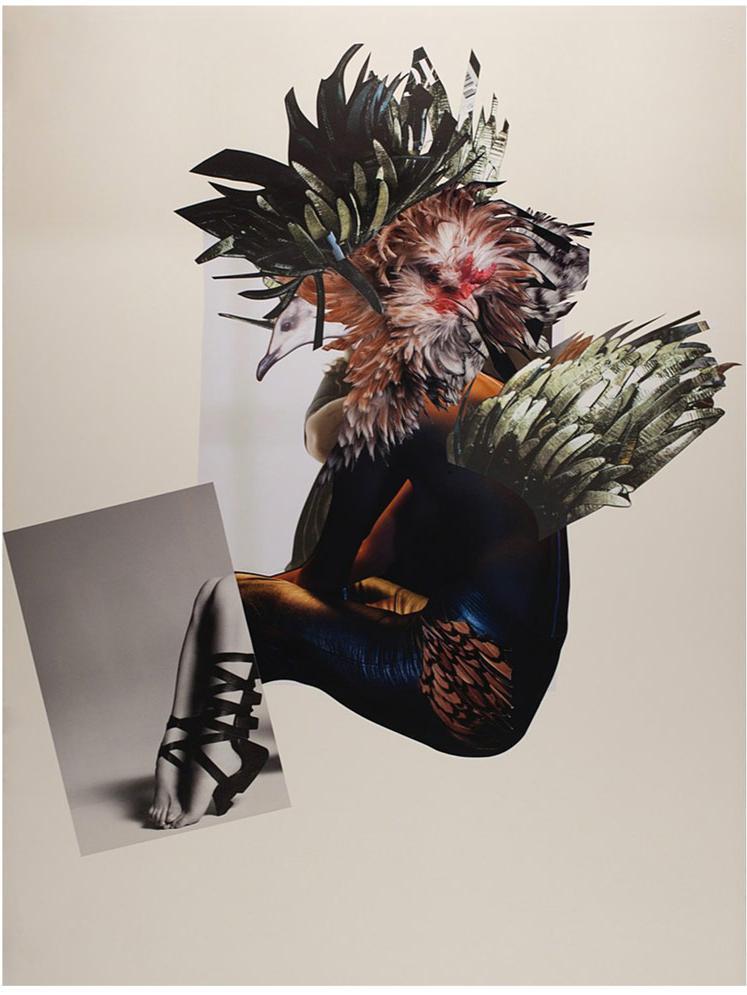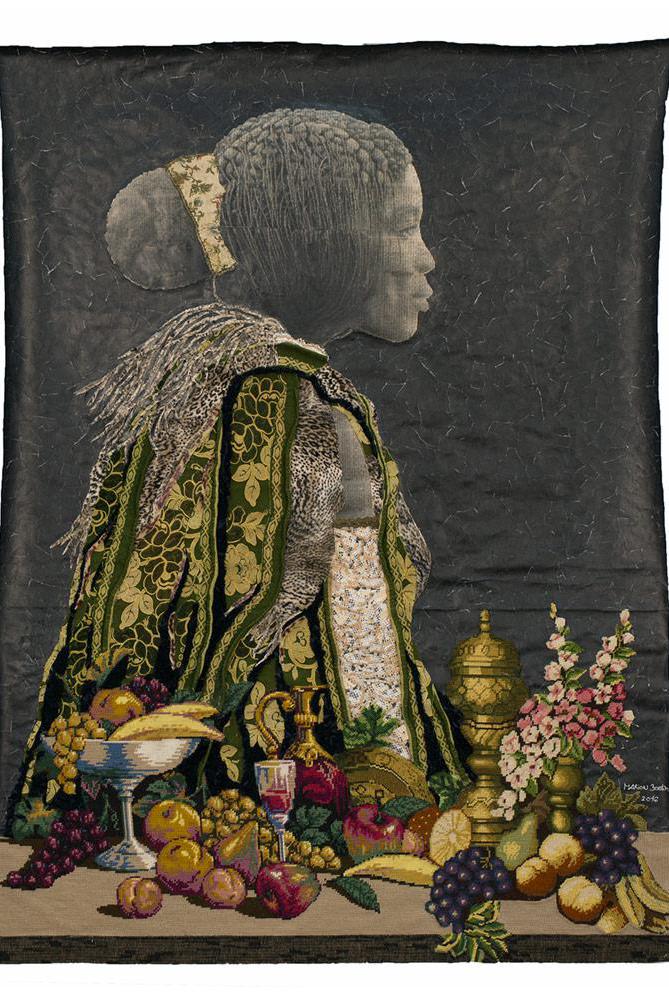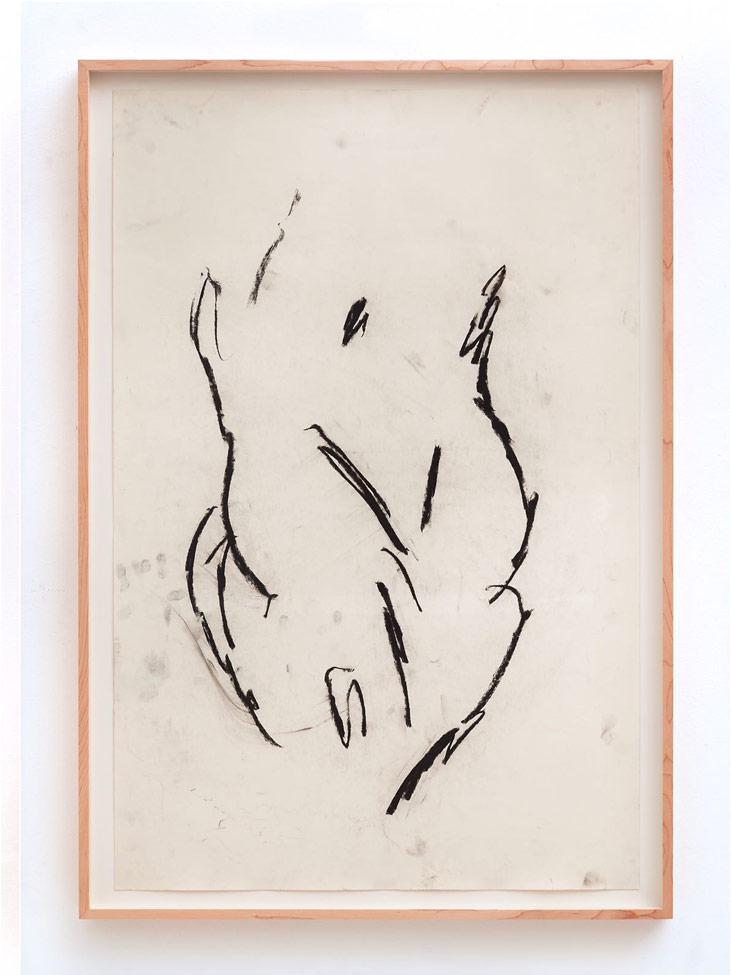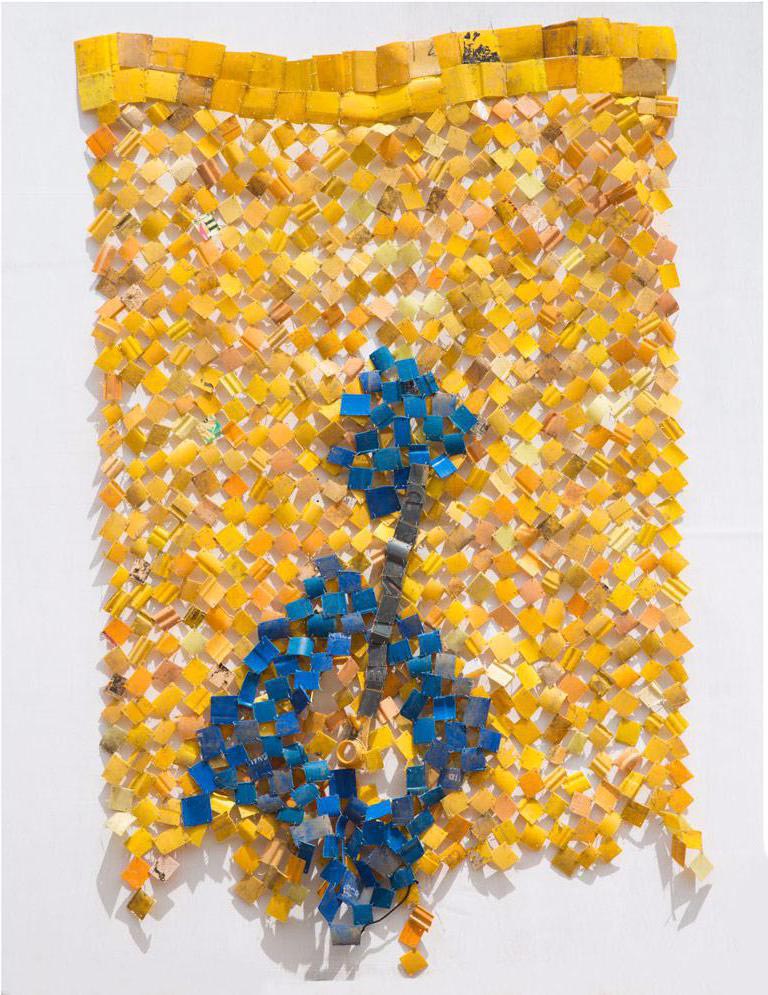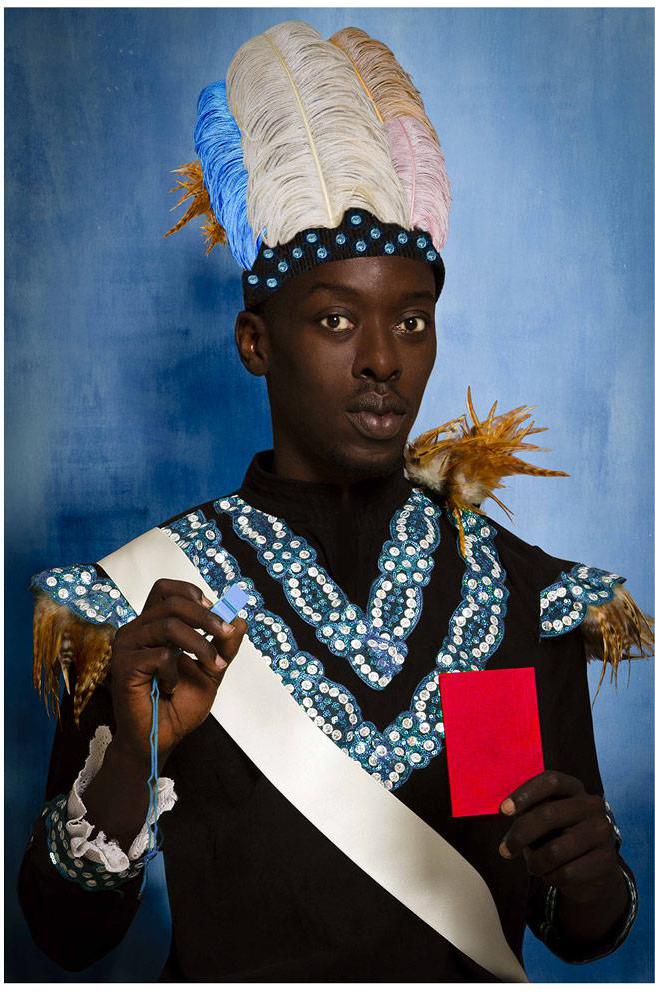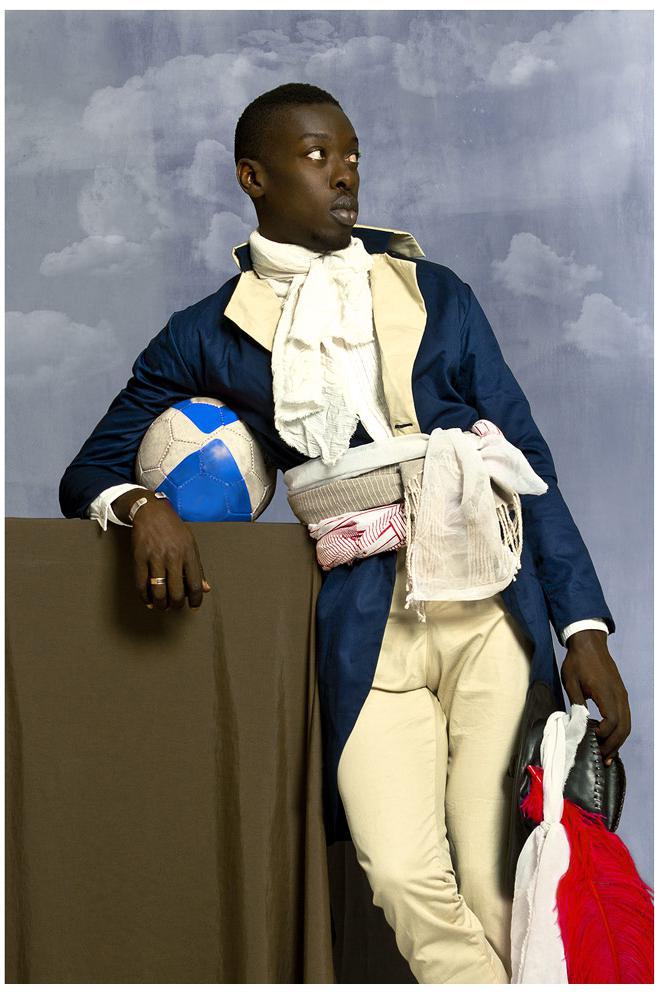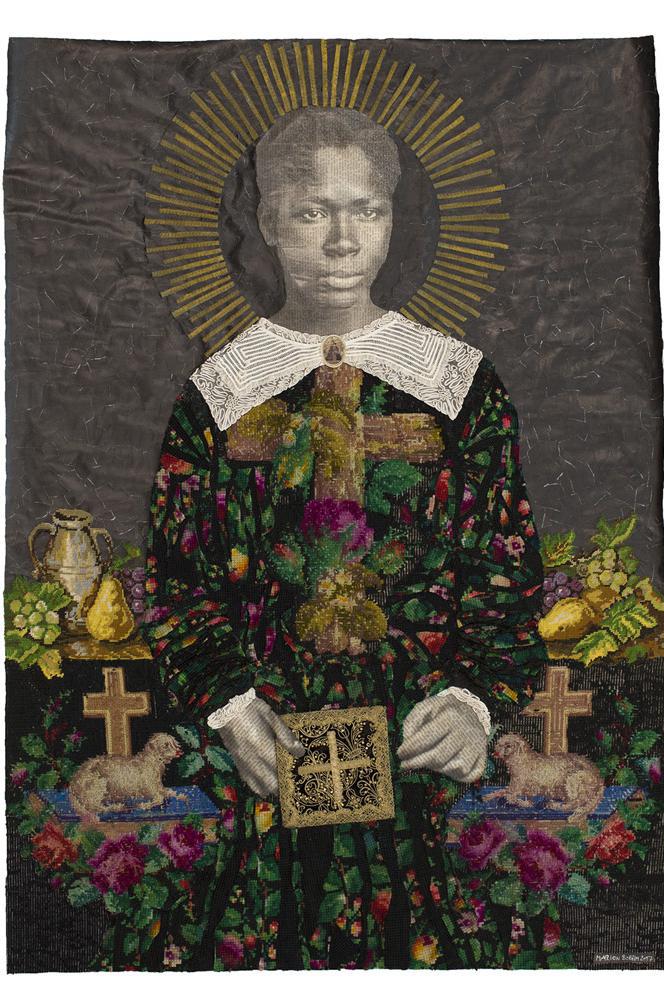Atsala Tsala
-
![]() Marcia Kure
Marcia Kure
Of Saints and Vagabonds. The Series: Andromeda,2017
Collage on Arches Natural White, Hot Press, Cotton, Watercolor Paper 340lb./640 gsm
55.9 x 76.2 cm -
![]() Marcia Kure
Marcia Kure
Of Saints and Vagabonds. The Series: Jagaban,2017
Collage on Arches Natural White, Hot Press, Cotton, Watercolor Paper 340lb./640 gsm
55.9 x 76.2 cm -
![]() Marion Boehm
Marion Boehm
Princess,2017
Collage on paper, mixed media, old goblins, lace, embroidery
136 x 99 cm -
![]() Cameron Platter
Cameron Platter
Untitled,2016
Charcoal on Paper
97 x 64 cm -
![]() Cameron Platter
Cameron Platter
Untitled,2016
Charcoal on Paper
90 x 64 cm -
![]() Serge Attukwei Clottey
Serge Attukwei Clottey
My statement,2017
Plastics, wire, and oil paints
208.8 x 177.8 cm -
![]() Serge Attukwei Clottey
Serge Attukwei Clottey
Revolutionary,2017
Plastics, wire, and oil paints
215.9 x 177.8 cm -
![]() Omar Victor Diop
Omar Victor Diop
Albert Badin,2014
Pigment inkjet printed on paper
60 x 40 cm -
![]() Omar Victor Diop
Omar Victor Diop
Jean-Baptiste Belley,2014
Pigment inkjet printed on paper
60 x 40 cm -
![]() Marion Boehm
Marion Boehm
Sacrified Lambs,2017
Collage on paper, mixed media, old goblins, lace, embroidery
140 x 100 cm
Atsala Tsala is an exhibition featuring five artists who use mixed media to explore identity, history and the recycling of everyday life into art. Suggested by Marcia Kure and Serge Attukwei Clottey “Atsala Tsala” means patching, stitching and even collage in the Ga dialect (Greater Accra region). It is a technique that each artist in this show has, in some way, applied to their work. It also reflects the grouping of these five artists who come from different parts of Africa.
Wall based work from Serge Attukwei Clottey from Ghana, will be exhibited alongside photography by Omar Victor Diop from Senegal, Marion Boehm, a German artist who works in South Africa, Marcia Kure from Nigeria and Cameron Platter from South Africa. Individually, each of these artists presents a unique personal vision while together, they offer an exciting overview of contemporary African art.
The Ghanian artist Serge Attukwei Clottey made a vivid impression last year in his work, My Mother’s Wardrobe, when he walked through Accra wearing the clothes of his recently deceased mother. His witty yet profound performance made a bold comment on the inequality of African funeral customs whereby a mother’s belongings are traditionally only passed on to their daughters. Clottey is also known for his sculpture and installations made from the ubiquitous yellow plastic jerry cans used to collect and carry water.
These recurring cans represent the ecological and economic hardships facing Ghanian working people but also the strong role that women play in ensuring their families have clean water at a time of poor resources and high levels of pollution. The works absorb a political narrative as much as they do Clottey’s personal history and formal approach to assemblage.
Whereas Clottey has spent his life in Africa, Marion Boehm was born in Duisburg-Rheinhausen, Germany, and moved to South Africa in 2010. Like Clottey her work often pays particular attention to the role of women in African society. Her exquisite collaged portraits merge recycled antique fabrics, shweshwe cloth, newspaper, pastel and graphite, elevating otherwise ordinary women into dignified figures of great beauty and individuality with an aim to redress their exclusion from art history. She includes pictorial elements from stories told to her by people she has met while she has been in Kliptown reflecting their histories alongside her own experience of living within their communities.
Marcia Kure, originally from Nigeria is now based in the US. The notion of moving away from Africa, and her home, has allowed her a critical distance to view her ethnicity and history from an outsider’s perspective. In her paintings and drawings Kure utilises a distinct linear style that echoes Nigerian Uli art and uses traditional pigments such as kolanut and coffee affording her semi-figurative images with rich sinuous layers of earth tones. The sense of postcolonial, fragmented identity is palpable in Kure’s mixed media collages that effortlessly combine elements as diverse as female identity, historical costume alongside contemporary clothing and hip hop culture.
Omar Victor Diop’s Project Diaspora, is a series of elaborately staged self portraits replicated from original 15-19th century drawings and paintings of notable African emigres. These works have the richness and complexity of Cindy Sherman’s photographs that retell the story of their subjects for a contemporary audience. By adding in professional football ephemera he adds an almost cartoon like element to their aesthetic, reminding the viewer that although talent and fame can elevate social status for African people, racial hierarchies and stereotypes still remain present.
South African artist Cameron Platter makes expansive, seemingly upbeat, drawings and paintings yet there is a sense of discord that belies their bold playful colours and pop graphic. Platter tells stories through words and images that pick and mix references from South African popular culture infusing everyday observations with a new often dark relevance. He combines traditional lino cuts, text art with a retro poster aesthetic and the kind of imagery more commonly found in graphic novels and disposable marketing leaflets. KFC logos alongside strip club signage and escort classifieds from a Durban newspaper speak of a darker underbelly in South African life.
About the artists
Serge Attukwei Clottey (b. 1985) lives and works in Accra. Recent exhibitions include Kampnagel, Hamburg (2015); Intelligentsia Gallery, Beijing (2015); The Mistake Room, Los Angeles (2015); 27th Festival Les Instants Vidéo, Marseille (2014); WUK, Wien (2014); Mohr-Villa, Munich (2014); Ozwald Boateng, London (2014); 11th Dak’art, Dakar (2014); Nubuke Foundation, Accra (2014); Stedelijk Museum, Amsterdam (2012)
Marion Boehm (b. 1964) in Duisburg-Rheinhausen, Germany, lives and works in South Africa (since 2010). Recent exhibitions include ARTCO Gallery at Cape Town Art Fair, (2017); In Toto Gallery, Johannesburg (2015); Young Blood Gallery, Cape Town (2014)
Marcia Kure (b. 1970), lives and works in Princeton, US. Recent exhibitions include The Heong Gallery, Cambridge (2017); Contemporary Art Centre, Brussels (2015); Galeria Municipal Almeida Garrett, Portugal (2015); Biennale of Dakar, Senegal (2014); Palais de Tokyo, Paris (2012); Purdy Hicks, London and Essie Green Galleries, New York (2011)
Omar Victor Diop (b. 1980), lives and works in Dakar. Recent exhibitions include, Institut du monde arabe, Paris; Louis Vuitton Foundation, Paris; Museum of Art and Design, New York; Mona Bismarck American Center, Paris (all 2017)
Cameron Platter (b.1978) lives and works in KwaZulu-Natal and Cape Town. Recent exhibitions include Depart Foundation, Los Angeles (2016); Iziko South African National Gallery (2015); Museum of Modern Art, New York (2011); Haus Der Kultur, Berlin (2011); La Biennale de Dakar, Senegal (2010); The Centre Georges Pompidou, Paris (2010)
